Hi everyone!
Have you ever noticed some beans which are cracked or discolored? Maybe you have heard that defective coffee beans in your cup will add some unwanted tastes and will damage the clarity of your cup of coffee. Is it true? How much does it matter?
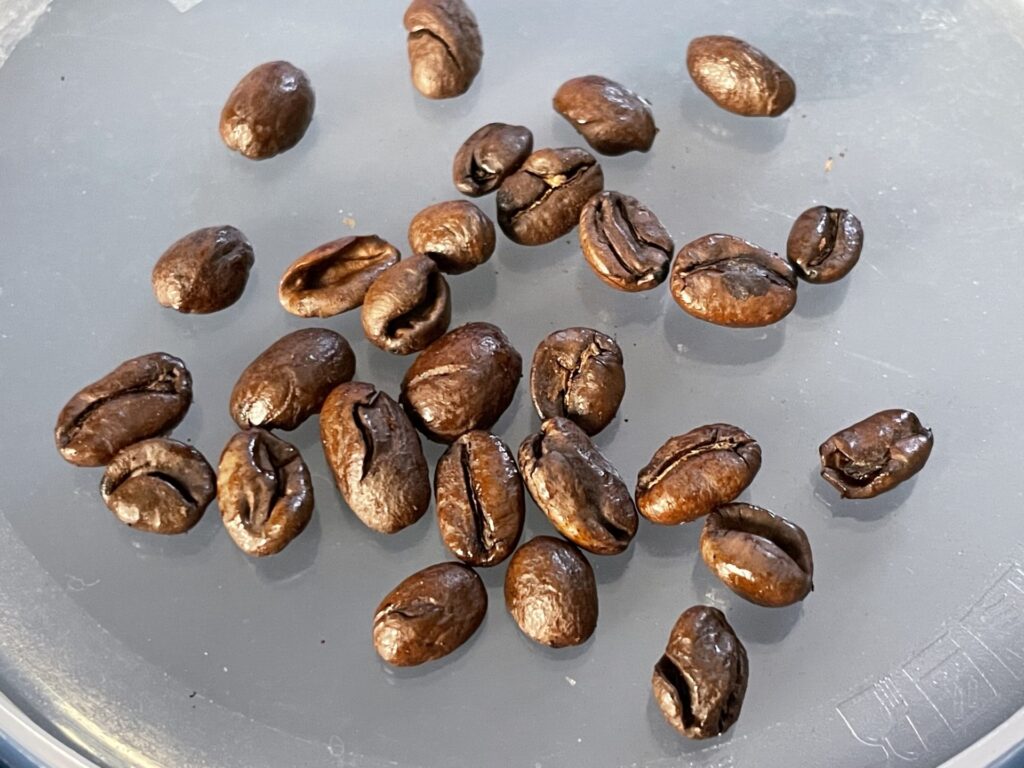
I have heard this from various places but I wanted to test it out for myself. So I picked out only the defect beans and brewed them. And compared the cup to a cup brewed with normal beans.
To just give you my conclusion, I did not feel a significant difference in the taste of the cups. But I also do feel that it is not as simple as it may seem, so let me share my experiment results.
Picking out the defect beans
First I had to start off this picking out the defects beans.
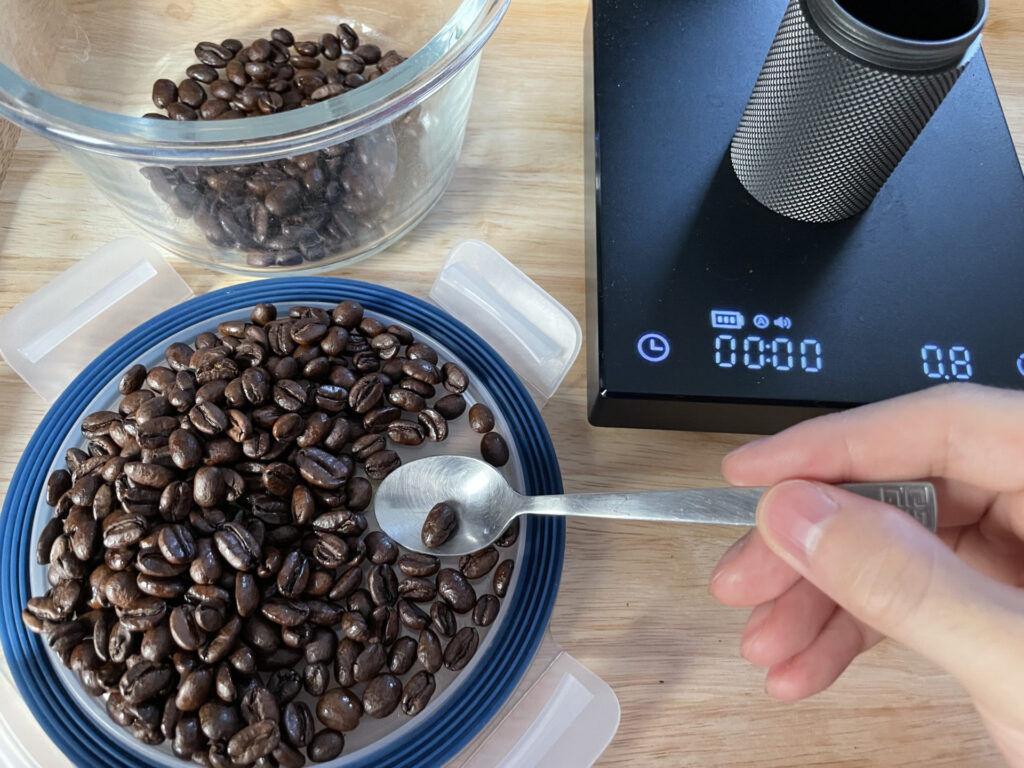
I used beans Ethiopian single origin beans from HORIGUCHI COFFEE. I did write a review in Japanese but it does not seem they ship overseas so I did not translate it. If you happen to be an English reader living in Japan, I do highly recommend HORIGUCHI COFFEE.
I just spread out the beans and went through picking out any beans with defects. HORIGUCHI COFFEE really does a great job picking out defects on their side, so it was very difficult to find any defects remaining.
This is the key point to keep in mind when assessing the results of my experiment. If you get your beans from a high quality roaster, it’s highly likely that you don’t have a significant number of defect beans in your back to start off with. And even if you do, they probably are not very bad ones. Severely damaged beans probably are already removed.
Anyway, I was able to find 2.9g of defect beans from my bag. So I will be using this.
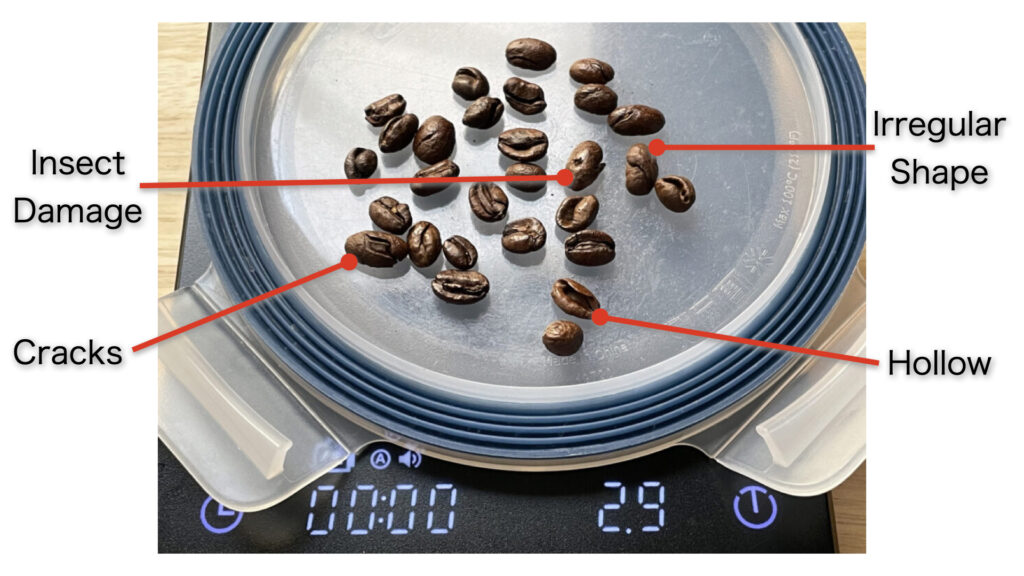
By the way, the normal non-defective beans look like this.
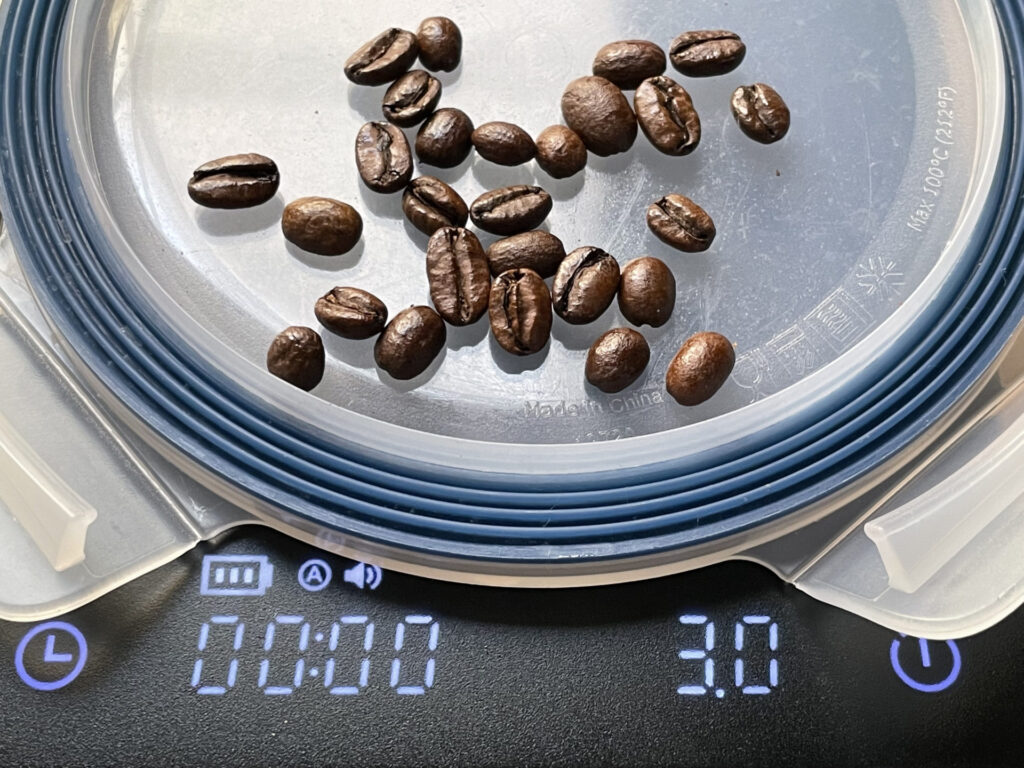
Comparing by cupping
Since I only have 3g worth of my test samples, I tried using the cupping technique to compare the cups.
Cupping is a method of brewing and tasting coffee widely used throughout the coffee industry. It is a way to brew consistently without the technique of brewing affecting the taste. It was the first time I tried cupping, so I was learning as I go and probably got some parts wrong, but it was fun.
First ground the beans at the same grind setting and put them directly into two cups.
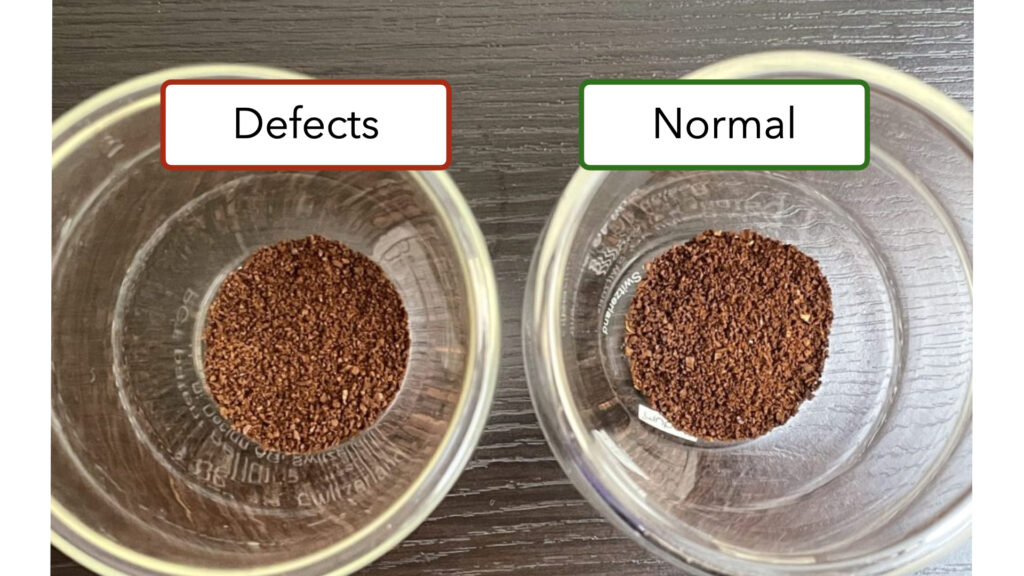
As expected, you cannot tell a difference.
I checked their smell, but honestly I did not feed any significant difference. If I was being very picky the defect beans smell a bit sweeter and lighter, where as the normal had a more fuller aroma.
In the cups with the grounds, pour 50g of 90℃ water to brew. Cupping uses immersion brewing where the coffee and water are mixed together and allowed to sit together as it brews.
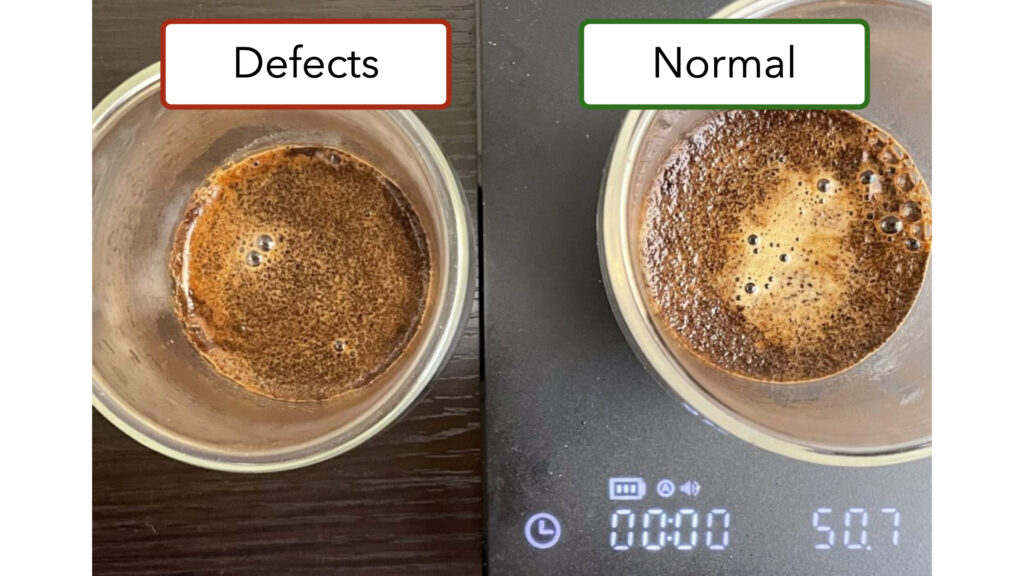
After pouring the water, wait 3mins.
Once 3mins have passed, use as spoon to break the crust, which is the layer of coffee ground which have floated to the top of the cup. This is apparently when the most aroma is released so best do this while having your noise close to the cup.
Once brewed I could really not tell a difference in their aromas.
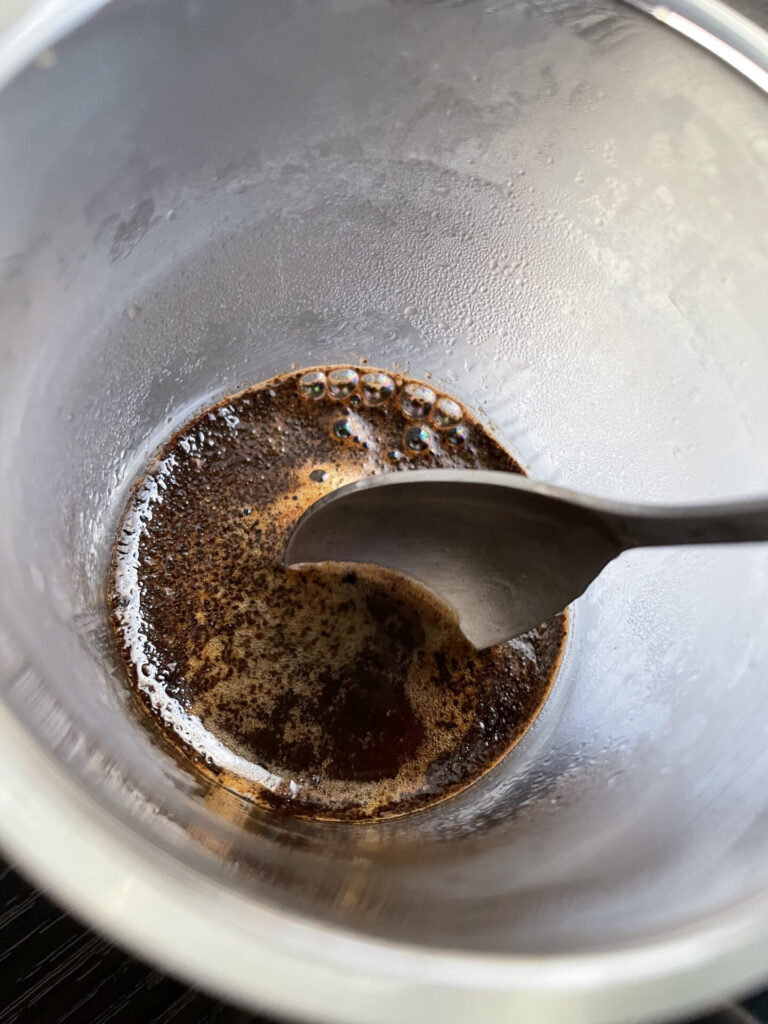
クラストを割ると、粉が落ちて行くので沈殿するのをもう少し待ちます。
Once the crust is broken, the grounds will slowly sink to the bottom, so wait a little bit more for this.
落ちたらこんな感じになります。
After waiting, the cups should look something like this.
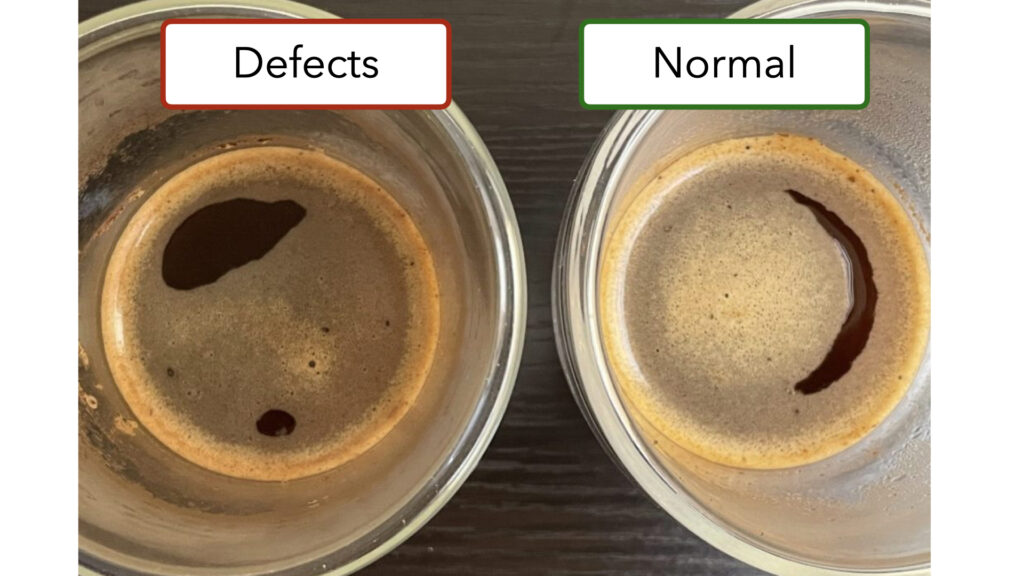
As a final step before tasting, you need to clean the cups. This means to remove the fines still floating on top using 2 spoons and gently scooping off the top of the cup. I made the mistake of using quite deep cups, and since I had so little liquid, this was quite difficult…
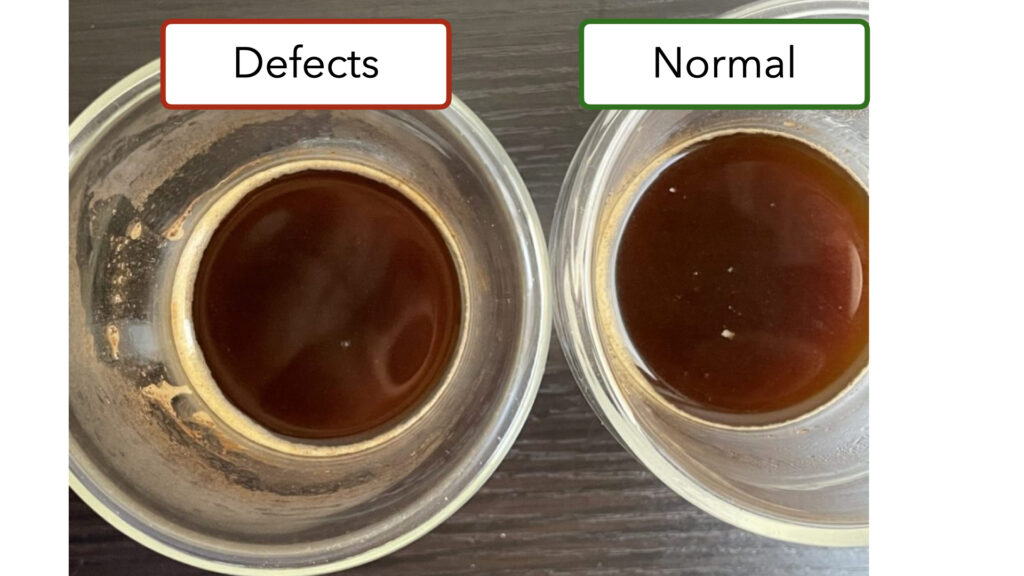
Once cleaned, you could wait a bit more for the coffee to cool down so that they are easier to taste.
Since you still have the coffee grounds at the bottom of the cup, you want to use a spoon to scoop a bit of coffee and taste it.
There’s a sort of ritual with real cuppings where you slurp the coffee from the spoons. The point is to apparently make the coffee sort of like a mist, so that you can get even tasting and maximize the aromas.
I did try to do this (don’t know if I did it right). It did actually make a significant difference in the taste and aromas I got, compared to just putting the spoon in my mouth. Especially the aromas, you can feel it a lot stronger and clearer if you slurp. It is worth a try.
So in the end, did the coffee taste/smell different? I did not feel so. The way the coffee hits your tongue actually impacts how you perceive the taste, so I did try a number of times. I kind of felt like the normal cup tasted ever so slightly cleaner, but I did know which one I was tasting, so I probably was biased.
In conclusion, as I stated at the start, defect beans does not have a noticeable difference in the taste of the coffee. But I must emphasize that this is only because I purchased my beans from a high quality roaster who already has picked out most of the defective beans.
So the one thing I can say is, if you buy your beans from a good roaster you should not worry about the few lightly defective beans which are still in the bag.
Maybe the results will be very different if I try the same experiment with commodity grade beans. I might try this if I get the chance.
What did you think? Do you pick out defect beans? Let me know in the comments!


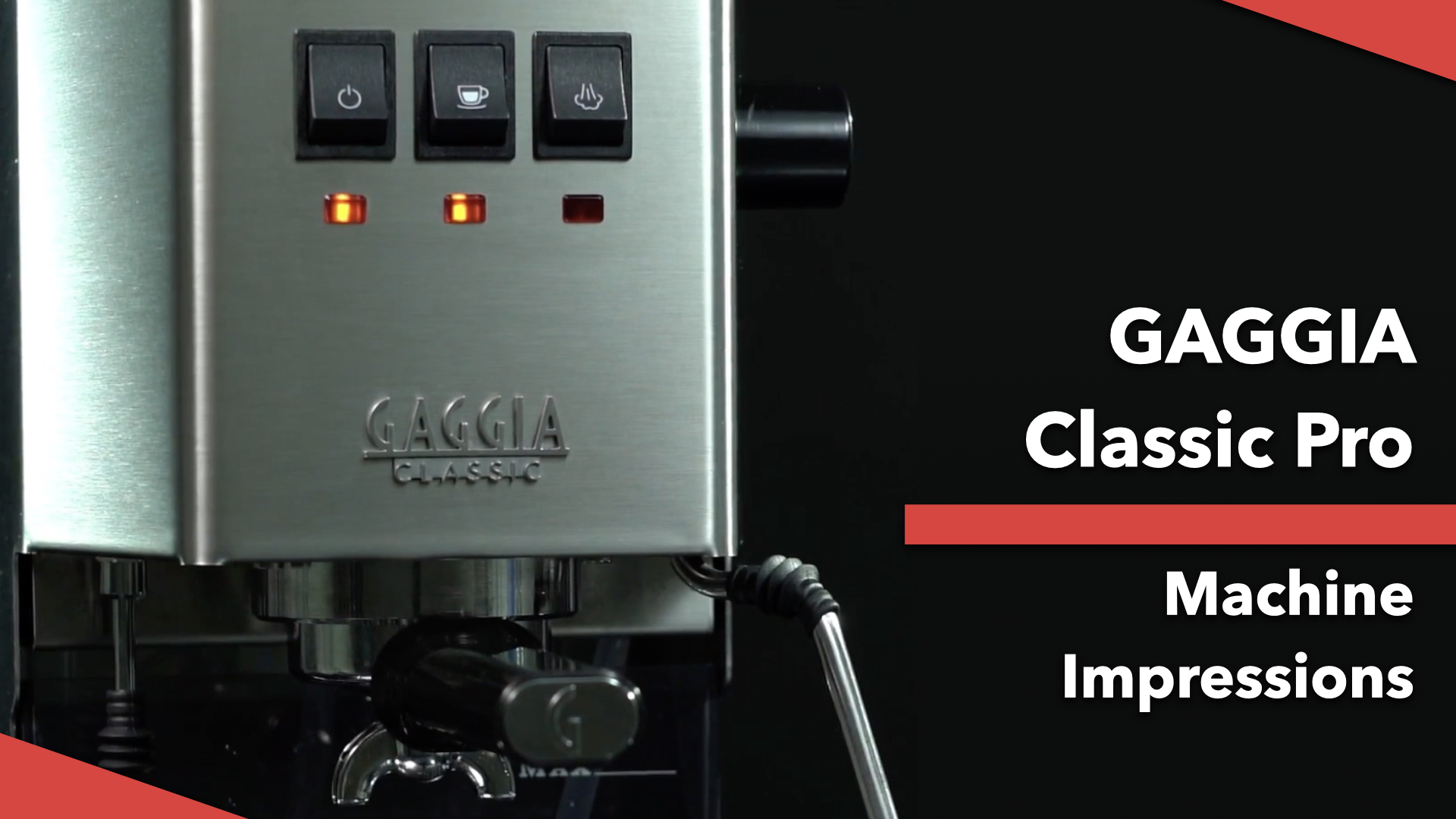

コメント